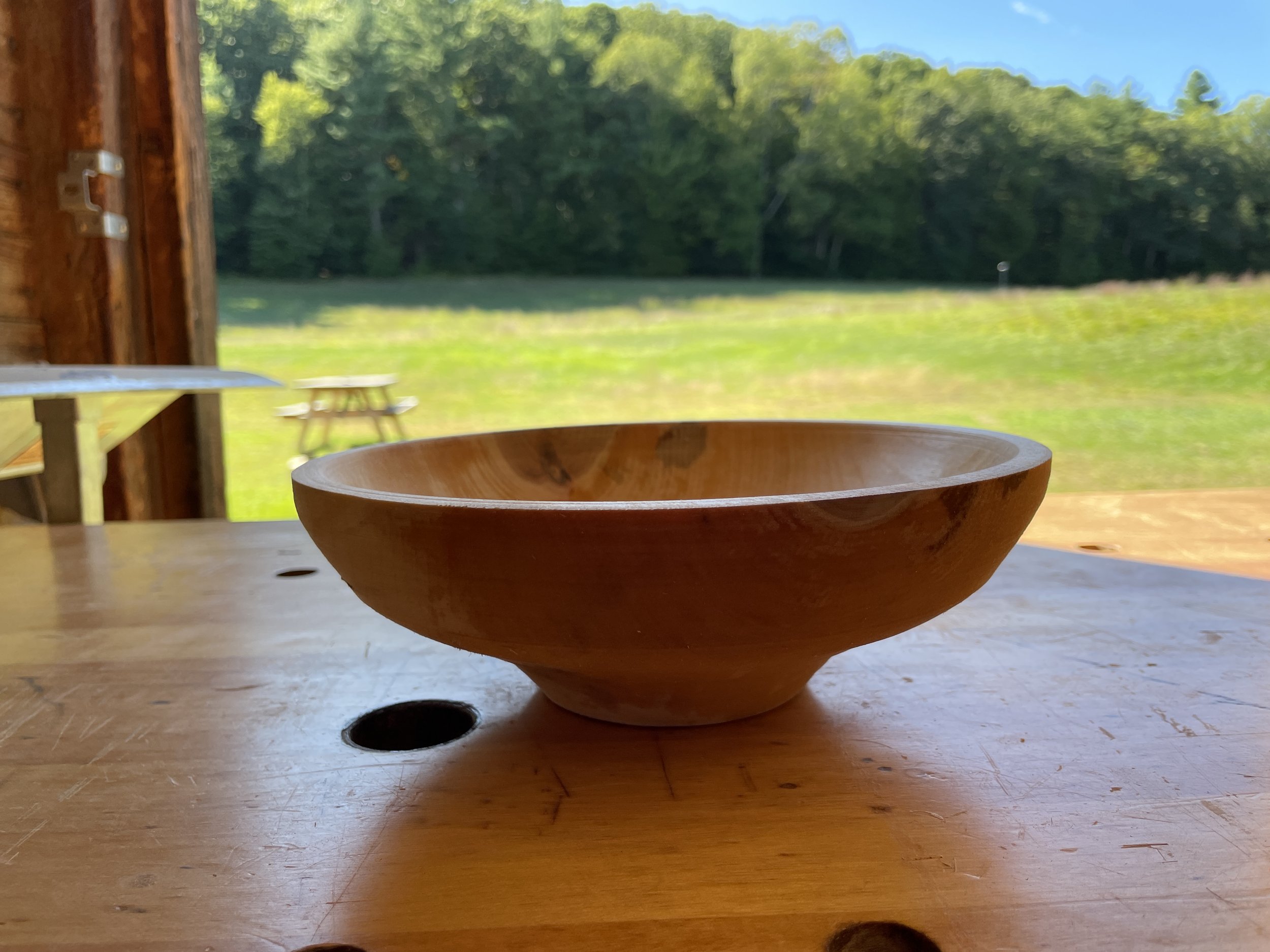What Woodturning Can Teach a Steel Junkie
Last weekend my Dad and I went to Homestead Woodworking School (it was excellent!) for a class on woodturning. We both have done woodworking for a while, but neither of us has a lathe or had done any turning whatsoever, so it was a new experience for both of us (we also got BBQ on the way home making it just about the perfect day). While there we used only two different gouges (the tools used in woodturning look like huge chisels but are called “gouges” instead). Both ran M42 steel and you can learn more about it from Larrin here. They were sharpened in a specific way—a fingernail grind. The entire process got me thinking about steels and grinds and questioning what we knife folks think about knife steel.
One thing that blew me away was just how punishing turning is on steel. We did green turning, meaning the blanks were freshly cut. They were so freshly cut that at 900 RPM, water came off in a small spray. This combination of water plus speed meant that the gouges were being subjected to an insane torture test. This torture test made the bro-science testing on Youtube look like a trip to the knife spa. Think about why: the gouge, to be effective, was basically impacting the wood (black birch, BTW) 900 times a minute, but only at the very, very edge of the gouge (if you are doing it correctly you can get huge, visually pleasing shaving leaping off the work piece in a bit of chip ballet). Because of the hardness of the wood and the moisture content, the edge of the gouge was forced to confront the worst things for steel—water and repeated impacts. But it did fine. There was no chipping and while the gouges were resharpened just after lunch that was after three hours of 900 impacts a minute. You’d expect them to be dull. Hour after hour, impact after impact, the M42 held up exceptionally well despite (or because of) its hardness of 69 HRc.
This goes against fixed blade knife steel orthodoxy. According to the IKC and many knife makers you want steel in your chopper to be tough, tough, tough. High hardness is not exactly the enemy, but it is not, according to the thinking, your friend and is definitely not necessary. Part me kinda knows this was wrong, after all M4 is a favorite steel for competition choppers and it is hard, but seeing the gouges work made me realize that our relentless focus on only a few steels for premium fixed blades is really short sided. It also results in us ignoring some really interesting and fun steels. I would 100% take a fixed blade made of M42. Not only because it seems like a great steel, but it is much cheaper than some of the new ultra-premium powder steels.
The other thing I learned was about grinds. There are two main grinds you can put on a bowl gouge—the standard grind and something called a fingernail grind. This second grind is quite thin (comparatively speaking—its still a gouge) at the edge, the equivalent of a full flat grind on a knife. Again this pushes up against orthodoxy. We are looking for either partial grinds or convex grinds. No one, the thinking goes, wants a full flat grind on a fixed blade. But here are these gouges doing something WAY tougher on their edges and they do fine with the equivalent of a full flat grind. There is not a lot of side to side twisting and torque, but there is a huge number of high velocity impacts on the edge alone and the steel holds up remarkably well. There was no chipping, which most folks assume will happen on hard, thin edges.
Using steel differently showed me that we in the knife community have really limited ourselves for no specific reason. Variety is the spice of life and I have quite a few 3V fixed blades. Let’s see some crazy hard ones. Why not? If hard steels can work in turning, they can work with what we do.

